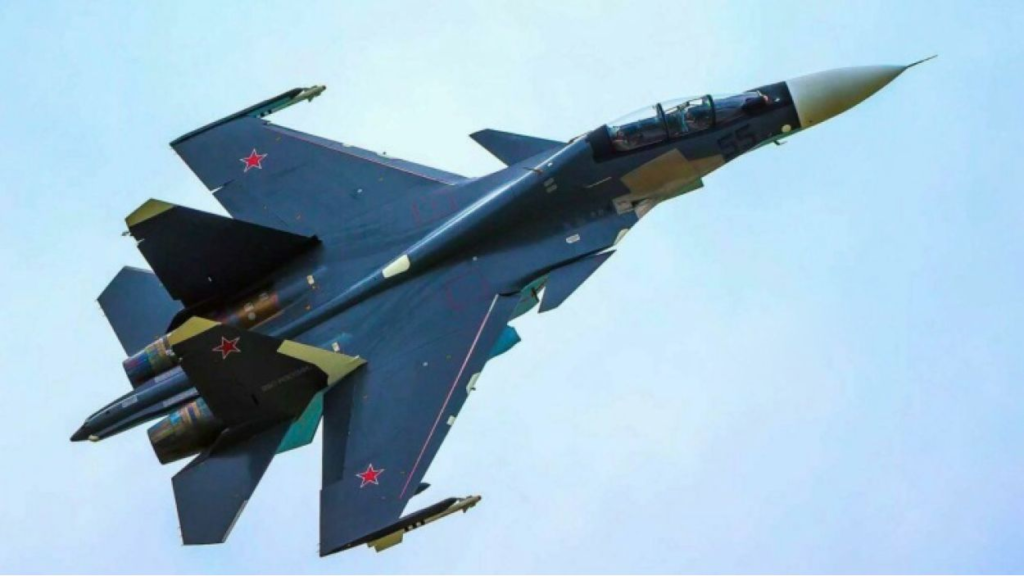Russia conducted another round of military exercises in its Kaliningrad region on Monday, including close air support (CAS), ground attack, aerial bombing, and maneuvers by infantry fighting vehicles (IFV) and ships of the Baltic Sea Fleet.
Advertisement
This comes close on the heels of Finland joining the North Atlantic Treaty Organization (NATO), which has brought into prominence the strategic importance of the geographically detached Russian region of Kaliningrad and the Baltic Sea.
While Russia does not believe NATO in Finland is as an immediate threat as Ukraine, Russia still maintained its standard line critical of NATO expansion. Finland shares a 1,340-kilometer-long border with Russia.
On Tuesday, its Defense Minister Sergei Shoigu told Russia’s military leadership in a meeting that Finland’s accession “creates the risks of a significant expansion of the conflict. But he added it would not affect the outcome of what Russia calls its “special military operation” (SMO) in Ukraine.
That the expansion of NATO is still being carried out without overtly targetting Russia was evident in its Secretary General Jens Stoltenberg’s statement that the alliance will not send any more troops into Finland unless it asked for help, according to the Associated Press.
Su-30 Super Sukhois, Su-24 Attack Aircraft & S-400 Breathe Fire In The Baltics
More than 15 aircraft of the mixed aviation regiment of the naval aviation of the Baltic Fleet undertook tactical flight exercises consisting of “combat missile, cannon firing and bombing in the Kaliningrad region,” TASS quoted the press service of the fleet.
“In the course of training flights, the crews of Su-30SM and Su-30SM2 multi-purpose all-weather fighters, Su-24 attack aircraft and An-26 military transport aircraft play out tactical episodes of missions for their intended purpose – fire support for ground units, destruction of command posts, armored vehicles and manpower of a mock enemy, as well as conducting aerial reconnaissance,” the press service said.
Advertisement

The combat aircraft carried out the bombing of the target field, field unguided weapons at coastal ranges at one of the training grounds, dropped bombs weighing 100 kg to 500 kg, and “approached enemy targets” under conditions of “electronic…suppression by a mock enemy,” the report further added.
Kaliningrad is a small Russian enclave, separated from the Russian mainland by more than 350 kilometers and sandwiched between Poland and Lithuania along the Baltic coast.
Only recently, in late March, the Russian military conducted drills with the S-400 Triumf air defense system and the Baltic Sea Fleet. The S-400 Triumf teams’ systems practiced response strategies upon receiving an alert regarding a notional airspace violation by an enemy aircraft.
Su-27 fighters from a naval aviation unit acted as the intruders while the air defense (AD) crews detected, identified, tracked, and engaged them in simulated combat. The exercises concluded with the Triumf teams electronically engaging the targets.
Kaliningrad Is Key As Finland Joins NATO
Interestingly, Kaliningrad also hosts the Iskander-M short-range ballistic missiles (SRBM) system that can reach Poland and the Baltic states.
Thus, the recent transfer of Iskander-M systems to Belarus, which have a range of 500 kilometers, could threaten new targets in Romania, Hungary, Slovakia, and the Czech Republic and provide cover for the Russian peacekeeping forces in Moldova. The Iskander-M complexes can use both ballistic and cruise missiles in conventional and nuclear versions.
Due to its strategic location, the Kaliningrad region serves as the primary base for the Baltic Fleet and is, therefore, home to a substantial number of land and air forces.
These forces protect the Kaliningrad area and expand Russia’s shore-based air and sea denial capabilities (anti-access/area-denial or A2/AD) into the Baltic Sea and the surrounding region.
Advertisement

For a long time, NATO military planners have been expressing concerns about the strategic location of Russia’s Kaliningrad exclave. It projects power in the heart of Europe and as a not-so-vulnerable outpost, which, if came under direct NATO threat or attack, will draw in Russia.
But with Finland joining NATO, a section of Russian strategists anticipate a remote possibility of the Baltic Sea Fleet’s activities being curtailed and supply to Kaliningrad being choked by blocking the Gulf of Finland.
Finland’s accession to NATO also possibly threatens St. Petersburg and Murmansk (the latter hosting the Russian Navy’s Northern Fleet bases).
Advertisement